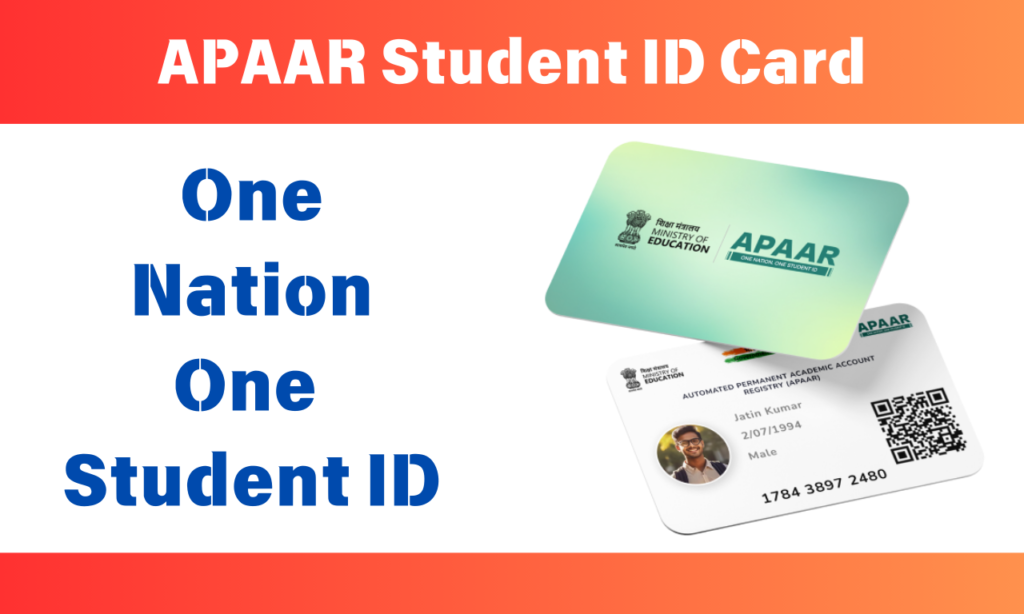Introduction to APAAR
The Automated Permanent Academic Account Registry (APAAR) is a groundbreaking initiative launched by the Ministry of Education, Government of India, on February 13, 2024. This program aims to revolutionize the way academic records are managed and accessed, ensuring a seamless educational journey for students across the nation. The APAAR initiative aligns with the National Education Policy (NEP) 2020, which advocates for digitization, personalized learning, and the universalization of education.
In a country as vast and diverse as India, with over 30 crore students enrolled in various educational institutions, the need for a standardized identification system has never been more critical. APAAR seeks to provide a unique 12-digit identification number to each student, enabling them to carry their academic identity throughout their educational and professional lives.
Objectives of APAAR
The primary objectives of APAAR include:
- Creating a Unique Academic Identity: By providing each student with a unique ID, APAAR aims to eliminate duplications and inaccuracies in academic records.
- Facilitating Seamless Student Mobility: The initiative enables students to transfer between institutions without the hassle of lost records or repeated documentation.
- Enhancing Data Management: APAAR aims to streamline the management of academic records, making it easier for institutions to maintain accurate and up-to-date information.
- Supporting Lifelong Learning: By tracking academic achievements and skills, APAAR supports students in their lifelong learning journeys, enabling skill development and upskilling opportunities.
Key Features of APAAR
1. Comprehensive Academic Records
The APAAR ID serves as a digital passport for students, storing their complete academic history. This includes:
- Grades and Marks: Securely stored records of all examinations taken.
- Certificates and Diplomas: Digital copies of important academic documents.
- Co-curricular Achievements: Recognition of participation in extracurricular activities, ensuring a holistic record of student achievements.
2. Integration with DigiLocker
APAAR is integrated with DigiLocker, a secure online storage solution. This integration allows students to:
- Access their academic documents anytime and anywhere.
- Share their credentials effortlessly with educational institutions and employers, eliminating the need for physical documents.
3. Centralized Record Management
APAAR acts as a centralized repository for all student records, reducing discrepancies and ensuring consistency. The system is linked to the Unified District Information System for Education Plus (UDISE+), allowing for real-time updates and easy access to student data.
4. Support for Credit Transfer
APAAR facilitates the transfer of academic credits between institutions, promoting flexibility in education. This is particularly beneficial for students who may change schools or pursue higher education in different locations.
5. Enhanced Data Security
The initiative employs robust data protection measures, ensuring that students’ personal information is secure. Features include:
- Encryption Standards: Advanced encryption techniques protect sensitive data from unauthorized access.
- Consent Mechanism: Parents or guardians of minors must provide consent for data sharing, ensuring compliance with legal requirements.
Implementation Strategy
1. Initial Rollout
The implementation of APAAR involves several key steps:
- Parent-Teacher Meetings (PTMs): Schools are encouraged to conduct PTMs to inform parents about the APAAR initiative and collect consent for ID generation.
- Verification Process: Schools will verify students’ demographic details and authenticate their identities through UDISE+.
2. Parental Consent
For students under the age of 18, obtaining parental consent is crucial. Schools must ensure that:
- A legally vetted multilingual consent form is distributed to parents.
- Consent is documented and stored securely within the school administration.
3. Ongoing Support
To assist schools and parents, a dedicated helpline (1800-889-3511) is available. This helpline provides support for any issues related to the APAAR ID generation process, ensuring a smooth experience for all stakeholders.
Benefits of APAAR
1. Facilitation of Student Mobility
One of the most significant advantages of APAAR is its ability to facilitate student mobility. In today’s educational landscape, students often transfer between schools for various reasons. With APAAR, students can:
- Retain their academic records without the risk of losing important documents.
- Transition smoothly between different educational institutions, enhancing their educational experience.
2. Enhanced Data Accuracy and Consistency
APAAR addresses the issue of data discrepancies in student records. By centralizing academic data, the initiative ensures that:
- Records are accurate and up-to-date, benefiting both students and educational institutions.
- Students’ academic histories are consolidated in one place, simplifying record-keeping for parents, educators, and institutions.
3. Improved Policy Making and Resource Allocation
The data collected through APAAR will be shared with various stakeholders, enabling informed decision-making for educational policies and resource allocation. By analyzing trends and assessing educational outcomes, APAAR contributes to:
- More effective interventions aimed at bringing Out of School Children (OoSC) back into the education system.
- Enhanced compliance with the Right to Education (RTE) Act, ensuring that every child receives the education they deserve.
4. Support for Lifelong Learning
APAAR is not just about academic records; it supports lifelong learning by:
- Monitoring students’ academic progress over time, enabling personalized study plans.
- Providing insights for skill gap analysis, helping students engage in relevant skilling programs.
Addressing Common Misconceptions
As with any new initiative, misconceptions may arise around APAAR. It is essential to clarify these to ensure widespread acceptance:
- Misconception: APAAR is only for elite schools.
- Reality: APAAR is designed for all students in India, regardless of the type of institution they attend.
- Misconception: Data security concerns exist.
- Reality: All APAAR-related information is securely stored and transmitted through authorized government databases, adhering to data protection regulations.
- Misconception: Participation in APAAR is mandatory.
- Reality: While APAAR is a valuable tool for students and institutions, it is not compulsory.
Conclusion
The APAAR initiative is a transformative step toward creating a more efficient, inclusive, and transparent educational system in India. By providing students with a unique academic identity, APAAR streamlines the management of educational records and promotes a culture of lifelong learning. As the program continues to roll out, it is poised to revolutionize the educational landscape, making education more accessible and manageable for millions of students across the country.
For further information about APAAR and its implementation, visit the official website: APAAR.

